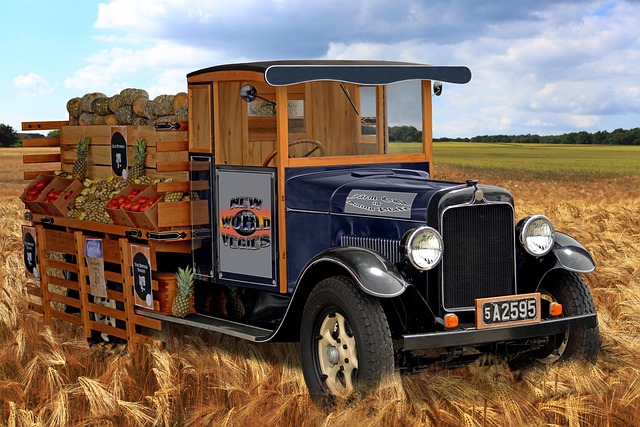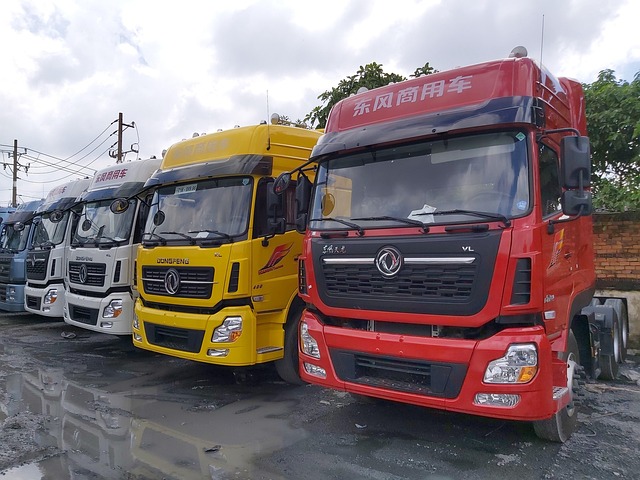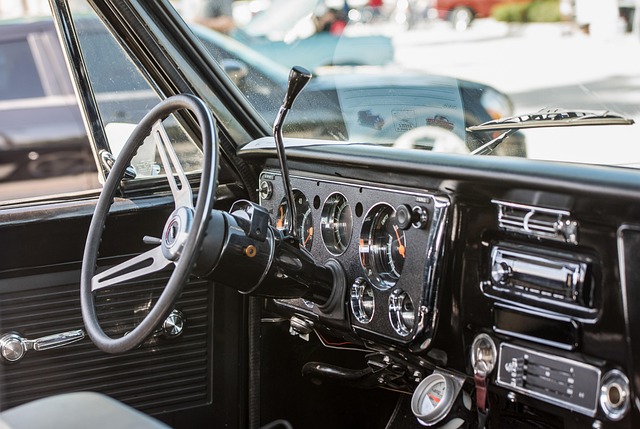Looking to register your car in California? This comprehensive guide walks you through every step, from understanding key requirements to obtaining your license plate. We cover crucial aspects like gathering essential documents and passing a DMV VIN verification process, ensuring a smooth experience. By the end, you’ll be ready to complete the application, secure your registration, and hit the road legally.
- Understand Requirements for Registration
- Gather Necessary Documents
- Perform DMV VIN Verification
- Complete Application Process
- Obtain License Plate and Registration
Understand Requirements for Registration

Before you begin the registration process, it’s crucial to understand the requirements for car registration in California. The first step is to ensure your vehicle meets all state and federal safety standards. This includes passing a smog test if applicable, which verifies that your car’s emissions are within acceptable limits. Additionally, the Department of Motor Vehicles (DMV) requires a Vehicle Identification Number (VIN) verification to confirm the vehicle’s authenticity and history.
For convenience, many Californians opt for a mobile VIN inspection or vin inspection service, allowing them to complete this critical step without visiting a DMV office. A mobile vin verifier can come to your location, perform the VIN check using advanced technology, and provide you with the necessary documentation for registration. This streamlined approach saves time and effort while ensuring compliance with California’s car registration requirements.
Gather Necessary Documents

Before you can register your car in California, you’ll need to gather several essential documents. The first step is to ensure that your vehicle has a valid and accurate Vehicle Identification Number (VIN) verification. This process, often conducted through a mobile vin verifier or mobile vin inspection, confirms the vehicle’s make, model, year, and other critical details. It’s crucial for both ensuring compliance with California’s regulations and preventing fraud.
Among the documents you’ll require are your vehicle’s title (if applicable), proof of insurance, a valid driver’s license, and registration fees. Additionally, you might need to present records of recent maintenance or repairs. A vin inspection is a key part of this process, as it verifies that your car meets all safety and environmental standards set by the California Department of Motor Vehicles (DMV).
Perform DMV VIN Verification

Before registering your car in California, it’s crucial to have a DMV VIN (Vehicle Identification Number) verification done. This process ensures that the vehicle is as described and has no outstanding issues. You can perform this step by taking your car to a designated DMV location or utilizing a mobile vin verifier for a more convenient option. Many professional services offer mobile vin inspection, allowing you to get the necessary verification right from your driveway.
By using a mobile vin verification service, you save time and effort. These services employ specialized technology to cross-check the VIN data with state records, providing instant results. This is particularly beneficial for those who may have difficulty visiting a DMV office or prefer a swift and hassle-free process.
Complete Application Process

To complete the car registration process in California, you’ll need to go through a series of steps that involve gathering necessary documents and passing inspections. The first step is to obtain a Vehicle Identification Number (VIN) verification from the DMV. This involves providing proof of ownership, such as a purchase agreement or title, along with your valid driver’s license and proof of insurance. Once you’ve submitted these documents, a certified inspector will conduct a thorough vin inspection to ensure the vehicle meets all safety and emission standards.
If you prefer a more convenient approach, consider using a mobile vin verifier. These services bring the inspection process directly to you. A trained professional will use specialized equipment to perform a vin inspection on-site, saving you time and effort. This alternative method is particularly beneficial for those who have busy schedules or live in remote areas where accessing a DMV office might be challenging.
Obtain License Plate and Registration

After completing the necessary paperwork and gathering all required documents, it’s time to obtain your license plate and registration. This involves a crucial step known as DMV VIN verification, where the California Department of Motor Vehicles (DMV) checks the vehicle’s unique identification number (VIN) to ensure its authenticity and compliance with state regulations. By providing your vehicle’s VIN during this process, you enable a thorough inspection that includes checking for any reported accidents or outstanding issues, ensuring both safety and legal conformity.
Once your VIN inspection is cleared, the DMV will issue a registration certificate and license plate. You can opt for standard in-person service at a local DMV office or leverage modern alternatives such as mobile VIN verification services, which offer convenience by allowing you to complete the process from the comfort of your home or on the go. These mobile vin inspectors provide efficient and reliable checks, making it easier than ever to register your vehicle in California.
Registering a car in California involves several steps, but with the right preparation, it can be a smooth process. By understanding the requirements, gathering all necessary documents, completing the DMV VIN verification, and following the application process diligently, you’ll have your vehicle registered and ready to hit the road in no time. Don’t forget to obtain your license plate and registration papers for official use.
